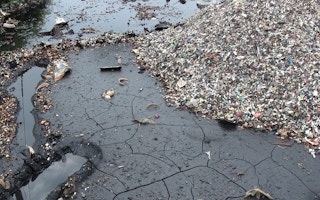China’s polluted land is being sold off for the construction of commercial buildings, schools and hospitals, a report by Greenpeace and Nanjing University has found.
Between May 2016 and October 2018 inspectors identified 174 contaminated plots of land across 27 provincial Chinese cities. One quarter have been sold off and nearly 44 per cent of those have not been fully remediated, putting public health at risk.
Identifying the people responsible for remediation is proving difficult. And local governments are seeking to make money by selling the land quickly. Current regulations and laws are proving inadequate.
Redeveloping polluted land
China launched its Soil Pollution Prevention Action Plan in 2016, with the aim of bringing 90 per cent of contaminated plots safely into reuse by 2020. Later that year the State Council instructed local governments to keep a register of contaminated plots and their reuse. Then in 2018 a new soil pollution law made that system a legal requirement.
The authors of the Greenpeace report analysed the published registers of contaminated land. Nearly half of the plots are sites of former chemical plants. They are typically tainted with heavy metals and volatile or semi-volatile organic compounds. Local governments have earned 104.96 billion yuan (US$15.19 billion) from selling off 25 per cent of them.
The results of allowing polluted land to be redeveloped can be severe. In 2016, hundreds of children fell ill after attending school near a former fertiliser factory in Changzhou, Jiangsu province.
“
The entire process has a very high risk of secondary pollution. It’s very likely that moving the soil will cause chemical reactions, creating dangerous gases or liquids.
Gao Shengda, editor, er-china
Land-funded governance
The report blames the premature development of polluted land on local governments dependent on the money. Remediation is being rushed particularly in cities, where governments rely most heavily on land sales for income. Provincial capitals received between 20 and 52 per cent of their income from land sales between 2015 and 2017.
Bao Hang, toxics campaigner with Greenpeace and one of the report editors, believes registers of polluted land are incomplete. “The real situation is likely to be even worse.”
Gao Shengda, editor of environmental remediation website er-china, said that restoring contaminated land in China most often involves replacing the polluted soil, because that allows construction to start sooner.
Gao explained: “The entire process has a very high risk of secondary pollution. It’s very likely that moving the soil will cause chemical reactions, creating dangerous gases or liquids.”
Who pays?
Although the “polluter pays” principle is enshrined in the soil pollution law and the 2016 action plan, it is difficult to implement in practice. Processes for identifying polluters are not in place, and if they are identified, they may be bankrupt or unable to afford remediation costs, leaving the government and new landowner to bear the costs. Local governments or developers are only remediating 65 per cent of the 174 identified plots.
Bao says that local governments may return land to development faster by stepping in but this discourages land users from taking measures to avoid pollution.
The report also complains of inadequate transparency over remediation efforts. Key soil assessments and information on remediation processes and completion were not available for over half of the plots.
“The best example of this is Shanghai, which has published details of plenty of contaminated plots of land, but only gives identifying numbers,” said Bao. “While some former industrial cities such as Xi’an, Harbin and Changchun only list one contaminated plot, which obviously doesn’t reflect reality.”
A slowly improving system
The new soil pollution law which came into effect in January aims to resolve some of these issues. It rules that no work may start on a site until soil pollution risks have been controlled. There are also specific requirements for pollution checks on land to be used for residential and public use.
But Gao says it will take time to bring soil management into line with the new law. As the report points out, little attention is being paid to checking the environmental status of soil during planning, transfer and development of land. Moreover, land management authorities are not coordinating policy decisions with the environmental authorities. This means contaminated plots can easily be sold off before any remediation work has taken place.
Gao thinks that the handling of polluted land will improve and become more standardised as rules on how the law is implemented are released. He also revealed that the Ministry of Ecology and Environment is attempting to identify responsibility for the remediation of polluted land, in the hope of putting a more practical approach in place.
“Overall, understanding of soil remediation in the sector is weak. It hasn’t been given much systematic thought.”
This story originally published by Chinadialogue under a Creative Commons’ License.








